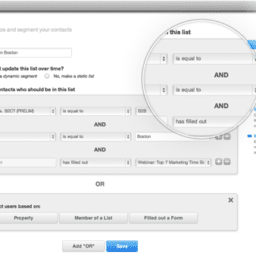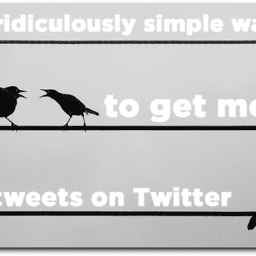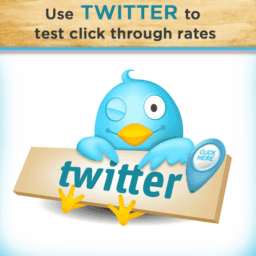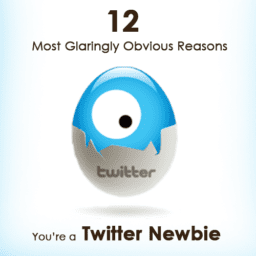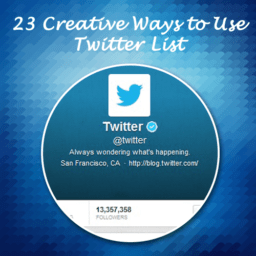
Do you need more leads?
Have you used Twitter to find qualified leads?
Does the idea of finding new customers on Twitter peak your curiosity?
Many businesses don’t know how to cut through the clutter and find the people they’re looking for on Twitter.
In this article you’ll discover five ways to find leads and customers, engage with them and drive them to your products.
#1: Search Keywords and Hashtags
Twitter has over 600 million users around the world, so it’s a good bet most of your target audience is on the platform. Are you taking advantage of that by actively looking for and talking with them?
If not, start by making a list of keywords and hashtags related to your business name, your product names and even your competitors and their products. Use that list to conduct a simple search on Twitter.
Sift through the search results to find and follow prospects you think are interested in your business and products. Engage with them by retweeting their content and using @mentions to connect personally.

A simple Twitter search returns a lot of opportunities.
Try a few advanced Twitter search options to narrow your results and really home in on your target prospects. You can refine your search to get excellent information, including their exact location.
For example, if you own a local restaurant and need a bigger lunch crowd, use advanced search to limit your results to people who are in your area. If your establishment is in downtown Seattle, for example, use this advanced query to find and respond to anyone looking for a good place to eat: “lunch” near:seattle within:2km.
Use advanced search queries to home in on your specific customer.
The advanced search results give you a real-time stream of people tweeting about—and potentially looking for—the product or service you offer.
That’s the perfect opportunity to @mention them and invite them to your business, a special event or one of your social profiles (including your website). If they tweeted about an issue, offer to help them find a solution.
Whether you’re using a simple search or an advanced search, as you’re going through the results, click over to the profiles and see who has the most followers and, more importantly, the frequency and volume of retweets they get for your keywords.
Those people are your influencers and will play an important part in reaching your target prospects. Start cultivating those relationships now.
Tip: You can use tools like Klout, Kred and PeerIndex to search for influencers on Twitter too.
#2: Pay Attention to Off-Topic Tweets
People regularly tweet to express their likes, motivations, lifestyles, desires and aspirations. That makes it easy for you to tap into these insights without formal (and costly) market research.
Gain consumer insights by researching influencer Twitter lists.
Don’t just use the search results (from #1) to find profiles and industry mentions—make a note of the other topics prospects tweet about. This way you can get to know what your consumers’ interests are outside of your particular offerings.
You might find, for example, a trend in which hashtags your followers use, certain lifestyle preferences or common life goals. The better you understand your market’s demographics, the more effectively you can market and sell.
Tip: Go back to your list of influencers and look at their public lists. Do any of their followers fit your target audience? If so, look at their tweets as well. If those people are using different hashtags than your original list, make a note to check those out.
#3: Host Voting Contests
Voting contests provide more than attention and engagement. You can gain consumer insight, increase your email leads, learn about product preferences and more.
Use a contest to collect lead data.
To get the best leads, offer a prize with value directly related to your business. That way you’ll incentivize people to participate. More importantly, you’ll attract people who are genuinely interested in what your business has to offer.
Tip: Email-gate your Twitter contest (similar to like-gating a Facebook giveaway) to further refine your list. Usually, the people willing to share personal information such as their email address are the ones most interested in what you have to offer.
#4: Share Click-Worthy Content
Quotes, questions and trivia are some of the most shared content on Twitter.
Quotes can inspire and create a ‘me too’ feeling that results in retweets and click-throughs. The quotes you tweet don’t have to be from famous people—go ahead and use your own content. Highlight witty quotes from your latest eBook or another product.
Questions provoke engagement by piquing consumers’ interest in your content. Tweet out the questions you get most and let people know they can find the answers on your website (don’t forget to include a link to the exact page). Asking the right questions gets you the most retweets and shares.
KISSmetrics uses informative trivia to market their webinar.
Trivia gives followers a sneak peek into your content and creates the urge to learn more. Are you hosting a webinar or another event soon? Tweet out some information related to the event topic.
Be sure you keep your tweets well below the 140-character limit so you have enough space for your link to make it easy to retweet.
Tip: Email-gate the free content you link to in your tweets.
#5: Take Advantage of Twitter Cards
Twitter cards take tweets beyond 140 characters—they let you add images, videos and product descriptions. To use them, you have to add a bit of code to your website or have an advertising account with Twitter.
While there are eight different kinds of Twitter cards, the product and lead generation cards are the ones that fit our purposes here.
Twitter product cards give customers and prospects even more product information.
Twitter product cards give you up to 200 characters for product descriptions. You can include your product’s title, description and a small image, as well as sales-friendly information such as availability, price and location.
Twitter lead generation cards are an easy way to collect email leads. When someone clicks on the card, it auto-populates with the email address associated with that user’s Twitter account.
Tip: Twitter lead generation cards work best when you give your followers an offer they can’t refuse, like a giveaway or contest entry, coupons or free trials. The better the offer, the more likely they’ll click—and the larger your list grows.
Final Thoughts
These are just a few examples of how you can use Twitter to find leads and current customers. Incorporate these tactics to connect with consumers, gain customer insights and increase your Twitter engagement.
Source: [socialmediaexaminer.com]







